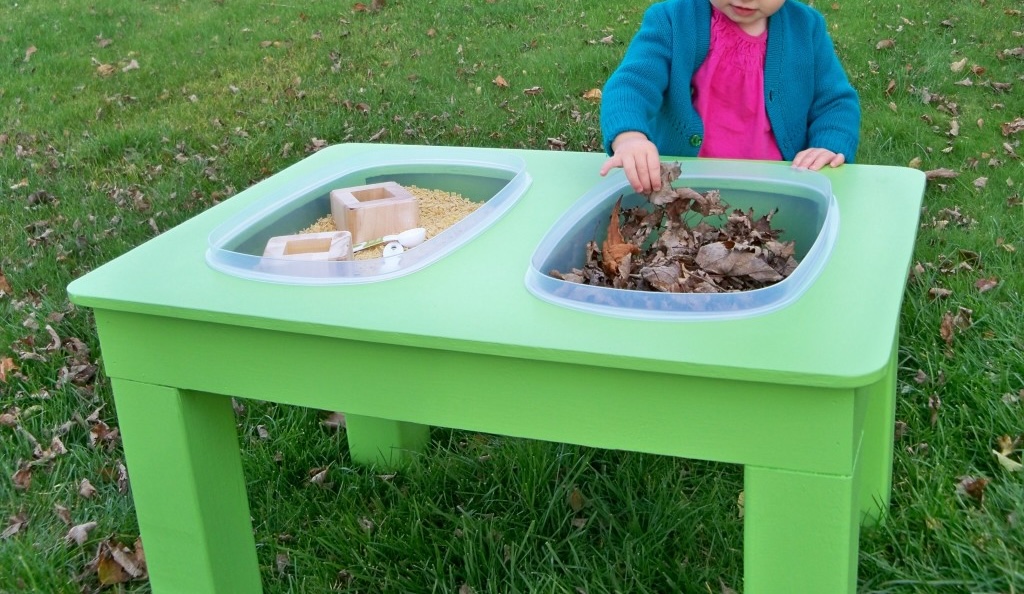
Written by: Tara Gray, M.A., CCC-SLP
Speech-Language Pathologist
Many of us have rooms or even an entire home full of toys for our child. Did you know the toys you already have can be used to work on your child’s speech and language development goals? Toys are an excellent tool for speech and language development in children. By using toys that your child already has, you can easily incorporate language-building activities into your child’s playtime routine. This series of blogs will explain exactly how to implement this using toys you probably already have!
Introducing Sensory Tables and Bins – January’s Toy of the Month
Sensory tables, sometimes called water tables, sand tables, or rice tables, are the perfect toy to start this series. They’re highly engaging for children because of the multi-sensory experience they provide and if you do not happen to have one you could make one. There are many simple tutorials online for how to make a sensory bin!
Making Sensory Bin (Rice/Sand)
Grab a small plastic container and fill it with either sand or rice. To add a pop of color, check out online tutorials on how to dye your rice in funky shades! Toss in some mini toys, cups, shovels, and strainer scoops to make the bin a wonderland for your little one to explore and discover!
Making a Sensory Bin (Water)
You can do this similarly to the sand/rice bin in a plastic container. But, if you want to skip the cleanup altogether, then go ahead and just use your bathtub!
But what does that have to do with speech and language?
Now, for the speech and language part. This part can take a little creativity, but you can add to your sensory table/bin anything that your child needs to work on for speech and language.
For Expressive Language (Naming)
Are they working on naming? Add small common object toys: toy food, vehicles, animals, small household items, items from nature, etc. As you scoop through the rice/sand/water to find the buried treasures, model naming the things you find, or their functions if that’s what your child is working on:
- “Oh, an apple!”
- “There’s a car! We can drive it, beep beep!”
- “Found a bear, grrr!”
For Articulation
Is your child working on articulation? Find items in your house that has your child’s target sound in it and bury them in the sensory table together. Then take turns finding the items and using their sounds to share what you found. You can model the words and have your child imitate or have them try the words on their own, talk to your child’s speech-language pathologist (SLP) about how best to target words with your child.
If they’re working on the word level:
- “Shoe”
- “Ship”
If they’re working on phrases:
- “Blue shoe”
- “Ship time”
If they’re working on sentences:
- “I found a blue shoe.”
- “The ship was hiding in the sand.”
For Receptive Language (Understanding Questions)
Is your child working on understanding questions? Keep the common objects in the sensory table and use these same toys to work on yes/no and either/or questions with your child. Bury the items and use a strainer, shovel, or hands to find them with your child. Again talk to your child’s SLP about which question types would be most appropriate for your child.
Yes/no object
- “Is this an orange?”
- “Is this a car?”
Yes/no function
- “Do we eat it?”
- “Do we bounce it?”
Either/or objects
- “Is this a shoe or a car?”
- “Is this an apple or a spoon?”
Either/or functions
- “Do we throw it or drive it?”
- “Do we fly it or drink it?”
Who Knew?!
Who knew a sensory table could be such a powerful tool for your child’s development? This list for how to use your sensory table to practicing speech and language at home includes a few ideas, but don’t stop at these, the possibilities are endless! These are just some starter suggestions for how you could target expressive language, articulation, and receptive language with your child in a fun and engaging way. Do you have a sensory table at home? Had you previously considered using it to target your child’s speech and language goals? Whether using a sensory table or not, next time you’re having a play session with your little one, try out some speech and language activities. Remember, the key to success is to keep it fun and engaging for both of you!
